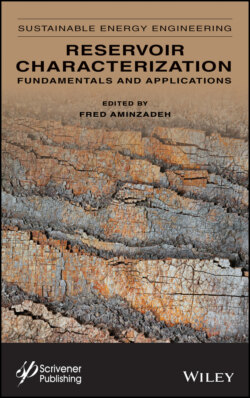Читать книгу Reservoir Characterization - Группа авторов - Страница 24
1.5.2 Microseismic Data for DRC
ОглавлениеThe permanent sensors also can record micro seismic or microearthquake (MEQ) data in passive mode without any seismic source. They detect the seismic events that are induced by hydrocarbon production due to change in the reservoir stress with pressure changes. Many examples of MEQ data applications in DRC and/or monitoring hydraulic fracturing or other well stimulation processes have been reported.
The results of seismic monitoring (4D or MEQ or combination of the two) along with the well log and production data can be used to constrain the flow simulation model in the reservoir history matching and fluid flow prediction process, as well as characterizing the fracture regime. As an example, see Maity and Aminzadeh [8]. Figure 1.7 shows how integration of conventional seismic, well log data and MEQ data have been able to create a 3-D fracture distribution, using a neural network approach through integrating “Fracture Zone Identifier” or FZI attributes.
Figure 1.7 Use of conventional seismic, well log data and MEQ data to create a 3-D fracture distribution volume, using a neural network by integrating “Fracture Zone Identifier” or FZI attributes, Maity and Aminzadeh [9].
